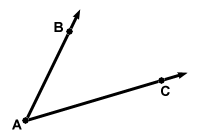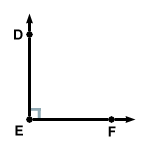Please wait while we process your payment
If you don't see it, please check your spam folder. Sometimes it can end up there.
If you don't see it, please check your spam folder. Sometimes it can end up there.
Please wait while we process your payment
Get instant, ad-free access to our grade-boosting study tools with a 7-day free trial!
Learn more



This site is protected by reCAPTCHA and the Google Privacy Policy and Terms of Service apply.
Create Account
Select Plan
Payment Info
Start 7-Day Free Trial!

Annual
2-49 accounts
$22.49/year + tax
50-99 accounts
$20.99/year + tax
Select Quantity
Price per seat
$29.99 $--.--
Subtotal
$-.--
Want 100 or more? Request a customized plan
You could save over 50%
by choosing an Annual Plan!

SAVE OVER 50%
compared to the monthly price!
| Focused-studying | ||
| PLUS Study Tools | ||
| AP® Test Prep PLUS | ||
| My PLUS Activity | ||
$22.49/month + tax
Save 25%
on 2-49 accounts
$20.99/month + tax
Save 30%
on 50-99 accounts
| Focused-studying | ||
| PLUS Study Tools | ||
| AP® Test Prep PLUS | ||
| My PLUS Activity | ||
No Fear provides access to Shakespeare for students who normally couldn’t (or wouldn’t) read his plays. It’s also a very useful tool when trying to explain Shakespeare’s wordplay!
Erika M.
I tutor high school students in a variety of subjects. Having access to the literature translations helps me to stay informed about the various assignments. Your summaries and translations are invaluable.
Kathy B.
Teaching Shakespeare to today's generation can be challenging. No Fear helps a ton with understanding the crux of the text.
Kay H.
No Fear provides access to Shakespeare for students who normally couldn’t (or wouldn’t) read his plays. It’s also a very useful tool when trying to explain Shakespeare’s wordplay!
Erika M.
I tutor high school students in a variety of subjects. Having access to the literature translations helps me to stay informed about the various assignments. Your summaries and translations are invaluable.
Kathy B.
Teaching Shakespeare to today's generation can be challenging. No Fear helps a ton with understanding the crux of the text.
Kay H.
Create Account
Select Plan
Payment Info
Start 7-Day Free Trial!
You will only be charged after the completion of the 7-day free trial.
If you cancel your account before the free trial is over, you will not be charged.
You will only be charged after the completion of the 7-day free trial. If you cancel your account before the free trial is over, you will not be charged.
Order Summary
Annual
7-day Free Trial
SparkNotes PLUS
$29.99 / year
Annual
Quantity
51
PLUS Group Discount
$29.99 $29.99 / seat
Tax
$0.00
SPARK25
-$1.25
25% Off
Total billed on Nov 7, 2024 after 7-day free trail
$29.99
Total billed
$0.00
Due Today
$0.00
Promo code
This is not a valid promo code
Card Details
By placing your order you agree to our terms of service and privacy policy.
By saving your payment information you allow SparkNotes to charge you for future payments in accordance with their terms.
Powered by stripe
Legal
Google pay.......



Please wait while we process your payment

Sorry, you must enter a valid email address
By entering an email, you agree to our privacy policy.
Please wait while we process your payment

Sorry, you must enter a valid email address
By entering an email, you agree to our privacy policy.
Please wait while we process your payment

Your PLUS subscription has expired
Please wait while we process your payment
Please wait while we process your payment

Angles
An angle is a geometric figure consisting of two
rays with a common endpoint. It looks like
this:


Long ago people wanted to measure angles, so numbers were arbitrarily assigned to determine the size of angles. Under this arbitrary numbering system, one complete rotation around a point is equal to a 360 degree rotation. (There is another unit of measure for angles besides degrees called radians, in which one full rotation is equal to 2Π radians; in this text we will use degrees as our default unit for measuring angles.) Two angles with the same measure are called congruent angles. Congruence in angles is symbolized by a small arc drawn in the region between rays. Congruent angles are drawn with the same number of such arcs between their rays. An angle's measure determines how it is classified.
An angle with a measure of zero degrees is called a zero angle. If this is hard to visualize, consider two rays that form some angle greater than zero degrees, like the rays in the . Then picture one of the rays rotating toward the other ray until they both lie in the same line. The angle they create has been shrunk from its original measure to zero degrees. The angle that is now formed has a measure of zero degrees.

An angle with a measure of 90 degrees is called a right angle. A right angle is symbolized with a square drawn in the corner of the angle.

An angle with a measure of 180 degrees is called a straight angle. It looks just like a line. Don't mix up straight angles with zero angles.

Another way to classify angles by their measures is to consider whether the angle's measure is greater or less than 90 degrees. If an angle measures less than 90 degrees, it is called an acute angle. If it measures more than 90 degrees, it is called an obtuse angle. Right angles are neither acute nor obtuse. They're just right.
Please wait while we process your payment





